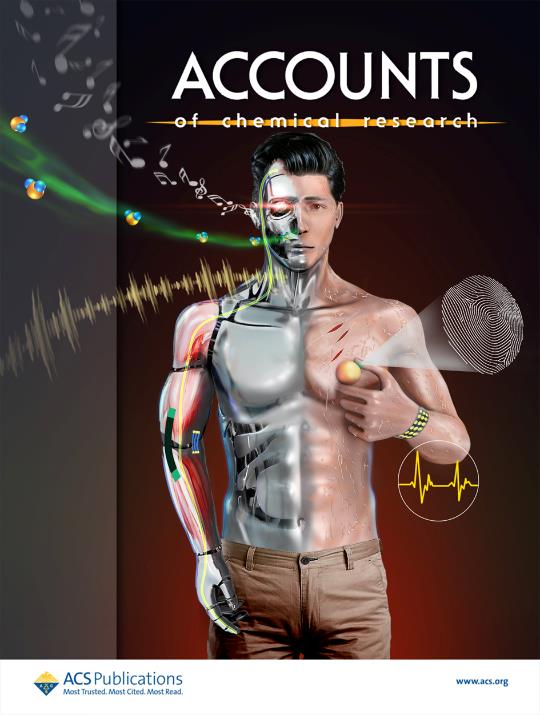Recently, benefiting from the rapid advances in the design of various flexible sensors, flexible wearable electronic devices have gotten increasing attentions for potential applications in individual medical care, health assessment, sports monitoring, etc. For example, Professor ZHANG Ting’s group, at Suzhou Institute of Nanotech and Nanobionics(SINANO) of Chinese Academy of Sciences (CAS), have made great research progress in flexible/stretchable sensing electronics.
As the most distinguished concept of flexible sensors, “Electronic skin (E-skin)” represents the functional sensing imitation of the human skin, endowing the superb characteristics such as superhydrophilicity, biocompatibility, and renewability beyond the restrictions of existed rigid materials, structures, and their functions. Inspired from this bionic design strategy, the natural micro/nanostructures and nanomaterials have been used as an effective imitation to fabricate the high-performance flexible and stretchable biomimetic sensors. With the invitation from “Accounts of Chemical Research”, professor ZHANG Ting's group has proposed the recent progress of this area entitled as “Materials, Structures and Functions for Flexible and Stretchable Biomimetic Sensors”.

Figure 1.Flexible and Stretchable Biomimetic Sensors (Accounts of Chemical Research,2019, 52, 288-296, Inside Cover)
Benefitted from the analogous working principles of living organisms, nature-inspired active matters and architectures, which have been well-tuned evolution through millions of years of optimization, provide us the best learning choices to overcome the limitations of current sensor techniques such as low sensitivity, instability, and delayed response time, etc. Hence in this Accounts, ZHANG Ting, et. al. showcases the recent progress in flexible and stretchable biomimetic sensors covering the several critical aspects of materials, structures, and applications.
Specifically, biomimetic sensing materials with stimuli response (such as light, humidity, mechanics, etc.) and multifunctionalities (such as superhydrophobicity, degradation, self-healing, etc.) provide distinctive and multiple detection features generally encountered in their traditional counterparts. In addition, artificial micro-nano structures derived from naturally existent high sensitivity structures (such as insect crack, leaves) and stretchable configurations (such as wrinkle, texture, mesostructures, etc.) offer additional feasible strategy of producing favorable sensitivity and stretchability.
Moreover, flexible and stretchable biomimetic sensors with the analogous senses of human beings (such as tactile, auditory sense, etc.) can efficiently acquire synthetical response abilities, endowing the new-type flexible sensors considered as “smart” electronic components on account of the counterparts to living organisms.
And in the end, based on the reviews of the progress, the authors proposed two important directions for the development of the flexible biomimetic sensors, including the customizable “smart’” materials via molecular design and the multifunction-oriented integration through the rational structural design. In a word, the flexible and stretchable sensors with the capability of mimicking various human behavioral patterns can be developed to boost the emergence of artificial intelligent society, which take the place of human beings in strenuous activities, enabling the progress in social science, technology and productivity to improve the quality of human life.
Contact information:
Prof.ZHANG Ting, Suzhou institute of Nano-Tech and Nano-Bionic, Chinese Academy of Sciences.
Email:tzhang2009@sinano.ac.cn
Reference:https://pubs.acs.org.ccindex.cn/doi/10.1021/acs.accounts.8b00497

